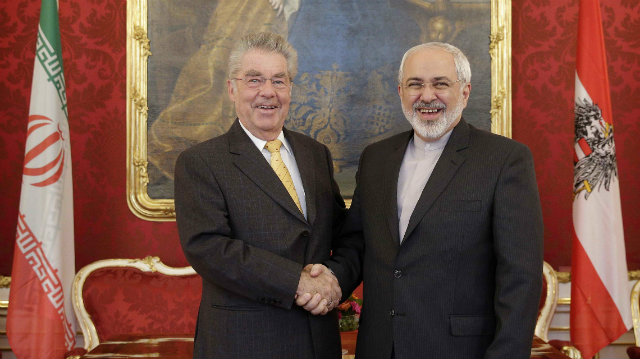SUMMARY
This is AI generated summarization, which may have errors. For context, always refer to the full article.

VIENNA, Austria – Iran and world powers were nursing their wounds on Saturday, May 17, after a bruising round of nuclear talks, but diplomats and experts remain hopeful a historic deal can still be struck by a July 20 deadline.
With 3 previous rounds already under their belts, the 3-day session that ended in a rainy Vienna on Friday night had been billed as the clincher, where the leaders would finally put pen to paper and start drafting the actual text of the deal.
But it was clear from the exhausted expressions on the faces of Iranian diplomats and their counterparts from the 5 permanent members of the UN Security Council plus Germany that nothing is in writing yet.
“The gaps were too large to begin drafting the text,” said Iran’s chief negotiator Abbas Araqchi, adding that “no tangible progress” had been made.
“This has, candidly, been a very slow and difficult process, and we are concerned with the short amount of time that is left,” a senior US official said.
“Huge gaps remain. There is really more realism needed on the other side,” said another Western diplomat. “We had expected a little more flexibility.”
Officials said negotiations would resume in the Austrian capital next month, but unlike in the previous rounds no set date was announced, and there was no joint statement.
Old demons
The aim of the sought-after accord is to reduce the scale of Iran’s nuclear activities, easing fears it is seeking to construct a bomb, in return for a lifting of all sanctions.
At the heart of the debate is uranium enrichment, which can provide nuclear fuel but also the fissile core of a nuclear bomb. It is the same issue that has dogged diplomatic efforts for years.
The worry is that Iran could in theory use its 20,000 centrifuges – and newer, faster ones under development – to further purify its already considerable low-enriched uranium stockpile to weapons-grade.
The powers want Iran to slash the number of centrifuges, but Tehran denies wanting nuclear weapons and considers this is a “red line” that it will not cross. In fact, it wants to install more.
“The Western powers want to divide the number of centrifuges by 4 or 5…while the Iranians believe that they need at least 50,000 for their future needs in research and nuclear power,” said Francois Nicoullaud, former French ambassador to Iran.
“The gap between these starting positions is immense,” Nicoullaud told Agence France-Presse.
But it is not the only issue.
Others are the new Arak reactor, which could give Iran weapons-grade plutonium, and the International Atomic Energy Agency’s snail’s-pace probe into alleged “military dimensions” of Iran’s past nuclear work.
This last issue is critical, said Mark Hibbs from the Carnegie Endowment for International Peace.
“Because the deal with Iran says that at the end of the day Iran will be treated no differently than any other state without nuclear weapons, the IAEA needs to know from Iran what its capabilities are related to nuclear weapons-making,” Hibbs told Agence France-Presse.
Ups and downs
Diplomats insist the process was always going to be hard and that the gaps can be bridged before the July 20 deadline, when a 6-month interim deal agreed in November in Geneva expires.
“In any negotiation there are good days and bad days, and there are ups and downs. This has been a moment of great difficulty, but one that was not entirely unexpected,” the US official said on Friday.
“We believe we can still get it done,” she said.
Kelsey Davenport from the Arms Control Association agreed, saying the differences are “large, but not insurmountable”.
“Negotiators on both sides expected obstacles, but if they are willing to be flexible and creative, a deal can be reached,” she told Agence France-Presse.
“The next few months will be critical, as they twist and turn the nuclear Rubik’s Cube to achieve a realistic deal with a strong base on which to build in the succeeding years,” Ali Vaez, Iran expert at the International Crisis Group, told Agence France-Presse. – Rappler.com
Add a comment
How does this make you feel?
There are no comments yet. Add your comment to start the conversation.